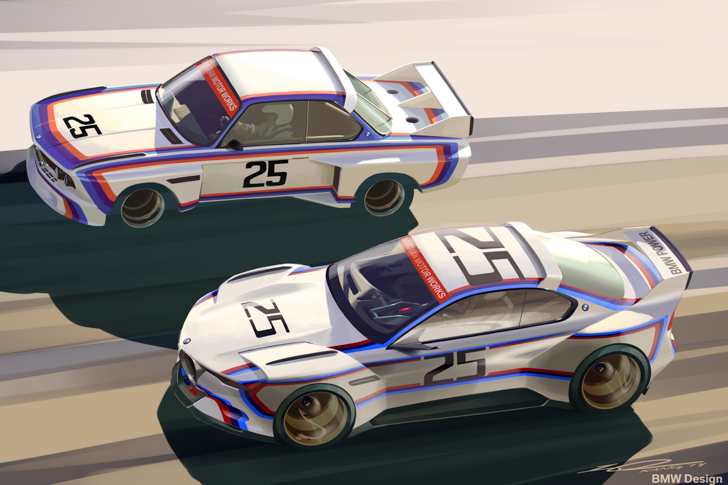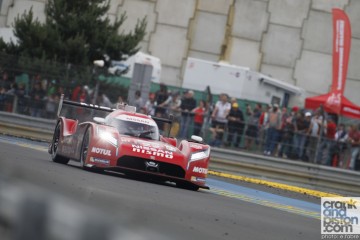The first few laps are taken at a steady rather than abrupt pace, partly to get me acquainted with the car and partly to get the slick tyres up to racing temperature (semi-slicks will be available in October, but the compounds are still being treated in Japan). Both Rami and James have warned me that offline, where sand and dust has accumulated, is incredibly slippery. So too are the red and white kerbs on each corner, which have been specifically designed to destabilise cars driving over them in an effort to keep drivers within the circuit confines. I heed their warnings, since I’m keen not to have my first Clio Cup experience end in either a spin or the wall.
With a couple of sighter laps in the bag, Rami gives me the signal to open the taps at the top of the main straight. By the time I throw out the anchor at the other end, the Clio is topping 150kph. Again, it’s not the fastest of racing machines, but the noise and the vibration through the wheels trick me into thinking that I’m going almost double that. A red marker cone appears, signalling where I should brake and change down (doing so through the corner will ruin the Clio’s balance and more than likely cause me to spin). Mounted on the right side of the steering column is the sequential gearlever against which I have to push quite hard to ‘click’ the next gear into place, remembering not to ride the clutch and let engine braking take at least some of the pressure off the Brembos. The changes themselves are almost instant despite my being tentative with the lever at first for fear of breaking it. But this is a Sadev system, designed to handle even the most gorilla-like driving style and endurance race distances to boot. As the adrenaline rises, I’m soon hammering the lever vehemently.
Ferocity though is not what I’m looking for with the brakes. Since there is no ABS, stamping on the pedal will cause the front-wheel drive hot hatch to snap away from me, resulting in a spin, some severely flat-spotted tyres and an extended period in the doghouse. I’ve been told that low to medium pressure gets the best results and though it takes a while to get right, I eventually find a good balance.
Through the sweeping right hand turn one, Rami’s hand signals tell me to keep the throttle constant to the apex (represented by a yellow cone) before a two finger point tells me to nail it as the corner opens out. We’re into fourth gear as the corner straightens out, but not for long as I’m soon hammering the box back down into second for the sharp left turn two. Braking early and scrubbing the speed off as a result allows me to get the front of the Clio turned in for the apex and a tidier line for the turn three right-hander. My enthusiasm gets the better of me on occasion though, and a couple of times I carry too much speed into the corner. The momentum pushes the front end wide and makes the rear end light, all the weight now over the front axle. Not only do I miss the apex, but this also ruins my line into turn three, the car again running wide and knocking a marker cone out of position as a tyre dips off the track. It’s a small mistake but in a race situation could prove costly.
It’s a complex balance, one aided immensely by the steering. Through the kink – a right-left-right chicane that leads up the hill through turns five six and seven – the steering is pinpoint. There’s a sizeable weight through the wheel and I do feel that I am muscling the car, but I also know exactly where the front wheels are pointing. Given the Clio’s short wheelbase, the balance is superb with neither bodyroll nor understeer making their presence felt. It’s particularly effective through the long sweeping turn eight where, remembering my lesson with Nissan GT Academy winner Salman Al Khater, I try to look through the upcoming corner to the next one to get my line right.
After 6/7 laps, Rami gives me the thumbs up and a signal to slow the car down. It’s a signal I’m tempted to ignore, but better sense prevails and I drop the speed as we cruise back to pitlane. I’ve been told to make sure that the gearbox is back in first by the time we pull up at the pit garage since the dogbox transmission will not change gear if it is stationary. I doubt the mechanics will be particularly chuffed if I absentmindedly leave the car in third.
Back in the garage, I’m clambering out of the Clio with a shirt now more sweat than cotton, again much to Rami’s amusement. He seems pleased though with my progress as he shakes my hand and claims, “you did well, man!” I’m pleased but at the same time frustrated, replaying in my head the little mistakes I made: the apexes I missed; the gear-changes I fluffed (including one embarrassing moment when I shifted the gears in completely the opposite direction). Without doubt the bug has bitten. The new Clio Cup drive experience may not be the fastest of driving experiences, but that’s not what it aims to be. Far from it. From one morning’s drive I’ve learnt throttle, gear and brake control, racing lines and certainly a lot more than if I’d simply been blasting a GT down the main straight at 200kph-plus. And all in a Renault Clio.
Perhaps next time I’m offered a drive, I won’t be so quick to dismiss it.
– FULL GALLERY OF SHOTS AVAILABLE HERE – CLICK –
| Renault | Clio Cup |
|---|---|
| Engine: | Renault F4R RS / four cylinder / 1998cc |
| Power: | 205bhp @ 7300rpm |
| Torque: | 168lb ft @ 5550rpm |
| Transmission: | Sadev six-speed sequential gearbox and reverse gear / steering-wheel mounted mechanical control |
| Front suspension: | Steering axis suspension / Bilstein shock absorbers / H+R springs |
| Rear suspension: | Programmed deflection / torsion beam suspension / Bilstein shock absorbers / H+R springs |
| Brakes: | Ventilated discs with Brembo four-piston callipers 312mm (front) / solid discs with Brembo callipers 300mm (rear) |
| Wheels: | Speedline 8 x 17-inch front and rear / one-piece aluminium-magnesium alloy wheels |
| Tyres: | Dunlop A46D LA720 Clio Cup (slick) |
| Weight (dry) | 1060kg |
| 0-100kph: | N/A |
| Top speed: | N/A |



